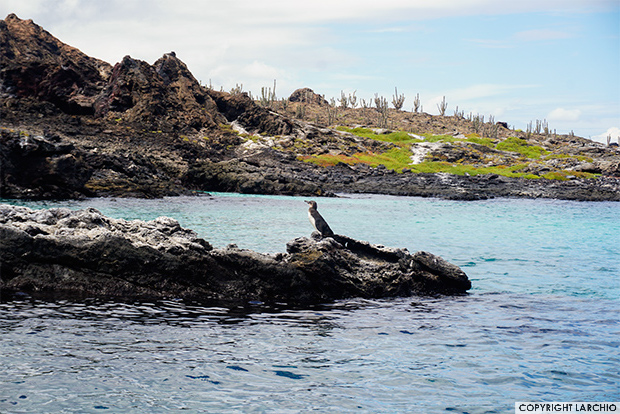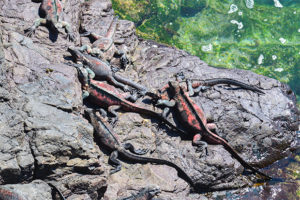Galapagos Islands Yacht Charter
Looking for the most trusted Galapagos tour operator? Take a trip with GalapagosInformation.com. Recommended in Booking.com. Enjoy the greatest traveling experience of your life. The top rated service, multiple selections, luxury rooms, skilled guides. All Inclusive travels, every month of the year. Book today. Galapagos Islands Yacht Charter.
Visit Galapagos Islands Ecuador is actually an undeniable paradise, some of the most impressive wildlife on this planet is found on the Galapagos Islands. A trip to the Galapagos would be the excursion of their lifetime for the majority of visitors. The wild animals in Galapagos you will encounter cannot be found somewhere else, but here sea and land wildlife and birds are more approachable.
You’ll find Boobies, giant tortoises, iguanas to name a few, will likely be noticed in close proximity during your activities. If you love snorkeling or diving, sea lions will be playing with you and also underneath them, turtles and tame sharks may be found.
When is the best time to travel the Galapagos?
It is a frequently inquired question: When is the best time to visit Galapagos? You can find many answers, depending on what you want out of your Galapagos trip. If you want to see the mammals and reptiles that the Galapagos Islands are famous for, you may want to consult this calendar to help you plan your journey.
Just like the birds, the reptiles and mammals in Galapagos follow particular phases of reproduction along with other life functions. These behaviors vary during various days of the year and also from island to island. For example, if you want to find the glowing red-and-green “Christmas Iguanas” of Española, you ought to go in December or January.
Galapagos Islands Cruise Itineraries
Every licensed vessel sailing the Galapagos follows a 15-day route approved and established by Galapagos National Park. Throughout that period of time, a ship may not go to the exact same site twice, with the exception of the Charles Darwin Research Station on Santa Cruz. How lines section the 15 days may vary, but four-, five- and eight-day options are the norm. Passengers can frequently combine these segments into 11-, 12- and 15-day cruises.
All ships basically follow the same protocol, regardless of itinerary: Island visits and water-based activities are done throughout the day, and also nearly all navigation is performed overnight.
All cruises begin or finish at one of two islands with an airport: Baltra, a U.S. military outpost during WWII turned Ecuadorian air base, or San Cristobal, the Galapagos’ second most populated island and home to the capital of the province, Puerto Baquerizo Moreno.
Since the approach to cruising continues to be standardized, choosing the right itinerary includes a whole lot to do with cruisers deciding which visitor sites are on their must-visit lists. Port research — particularly photo searching — is key. Keep in mind that the more the cruise, the farther west the ship will reach. That’s not to say the western islands are far better — it is a matter of personal preference. When you rail is also an important factor.
There’s one major exception: “Live aboard” ships carrying seasoned sailors are the only craft to see the northern islands, Darwin and Wolf, prime places for ski lovers. At Darwin, where there is not any landing site, schools of hammerheads are known to congregate.
Most passengers will at least spend a day or two exploring Quito or Guayaquil pre or post-cruise. It’s basically necessary, given the flight logistics.
Sierra Negra Volcano: Hiking enthusiasts are certain to adore the opportunity of this steep ascent to the rim of Sierra Negra Volcano. The hike up takes approximately two hours, with fantastic vistas all around. Horse riding provides another perspective of the gorgeous area.
Moreno Point and Elizabeth Bay: bursting a bit farther north, Moreno Point offers terrific dinghy excursions, complete with terrific bird-spotting opportunities. Alternatively, you may enjoy panoramic hiking through the lava rocks and search for whale-tip sharks from the waters. Climb into a small dinghy to explore the little islets off the coast of Elizabeth Bay, watching unique mangrove woods, celebrating penguins along with blue-footed boobies on the craggy rocks, and getting close to sea lions and various fish species with some snorkeling adventures.
Bolivar Channel: Lots of Isabela island cruises sail throughout the Bolivar Channel, a station that separates Isabela Island as well as the neighboring Fernandina Island. The coldest waters in the Galapagos area, it’s common to find dolphins and whales swimming close to your cruise ship.
Tagus Cove: named after a British boat, sits close to the Bolivar Channel. Take a calm ride in a small boat below the cliffs, keeping your eyes peeled for nesting pelicans and blue-footed boobies, in addition to penguins, brown nodes, and cormorants. Flex your muscles using a increase, taking in the jagged coastal rocks, volcanic landscapes, dry vegetation, and views of the shimmering Darwin Lake. There are loads of lovely sandy shores also, perfect for relaxing and soaking up some sun post hike.
Vicente Roca Point: At the north of Isabela Island, Vicente Roca Point is a top spot for snorkeling and boating. The twin coves shield a variety of unusual species, including sunfish, seahorses, and puffer fish. Bird lovers won’t be disappointed either, with terns, blue-footed boobies, and penguins, amongst others.
Galapagos wildlife encounters are plentiful on tours of Isabela Island, and you are sure to be thrilled whether you opt for a Galapagos small boat cruise, a little luxury yacht, a dinghy excursion, or something different completely.

Early human activity on the islands was very damaging for the wildlife because pirates and buccaneers took giant tortoises aboard for food. 24% of plant species and 50% of vertebrate species are still considered as endangered as a result of human activity in earlier times. Clandestine fishing of black coral, freshwater, shark fin, sea cucumber and sea horse is incredibly destructive to the marine life. Population growth caused by tourism is placing a strain on the unique and fragile environment.
GALAPAGOS CRUISES 2024
NEMO 2
| DEPARTURES | ITINERARY | AVAILABLE CABINS | SPACES | |
|---|---|---|---|---|
| There aren't available dates for the selected dates |
















